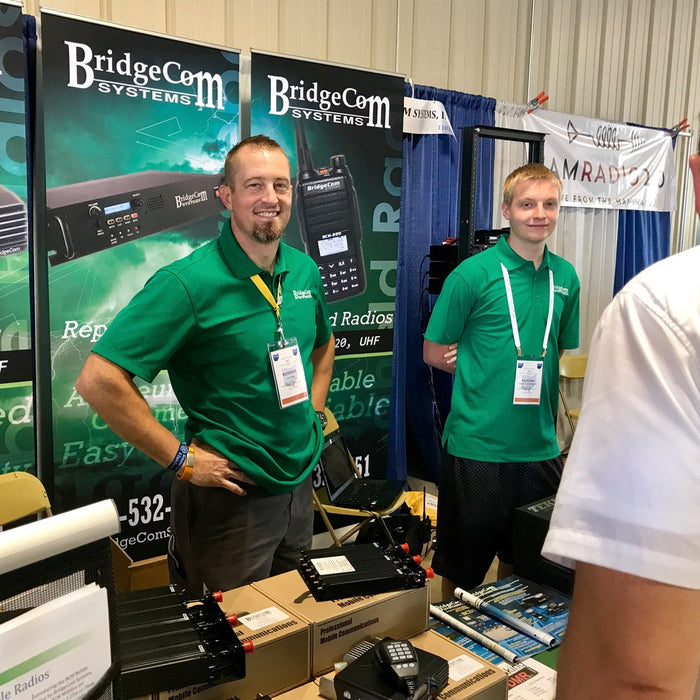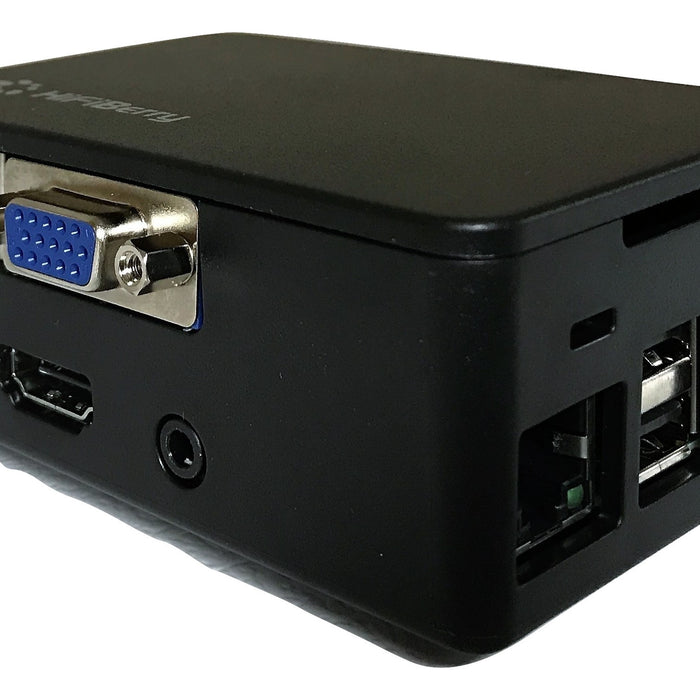Have questions? Give us a call! (816) 532-8451
Have questions? Give us a call:(816) 532-8451
Great choice! Welcome to the exciting world of digital radio.
Have questions? Give us a call! (816) 532-8451
Have questions? Give us a call:(816) 532-8451

What can I say about Dayton Hamvention 2017 other than WOW! It had everything; Great venue, 30,000 of your favorite ham radio friends, great vendors, Rain, Rain, and more Rain, good food, great buys, mud and on-site camping. Did I...

Amateur Linking What is amateur radio linking and why is it so important, necessary, or just plain fun? Let's say you want to set up a repeater at Hamvention and talk to the group back home. How is that possible?...

Reviewed by Pascal Villeneuve, VA2PV
va2pv@arrl.net
 In the past few years, VHF/UHF digital voice communication has been one of the fastest growing segments of Amateur Radio. D-STAR and System Fusion (C4FM) were specifically designed for Amateur Radio, but this is not the case with DMR — Digital Mobile Radio. It is an open standard, developed by the European Telecommunications Standards Institute (ETSI). As such, this technology is available to any company willing to build a digital radio, such as the BridgeCom Systems D-500 (by TEKK) reviewed this month. Introduction to DMR There are three types of DMR — Tier I, Tier II, and Tier III. To learn more about DMR, I strongly suggest that you read “Introduction to Digital Mobile Radio (DMR)” by John S. Burningham, W2XAB, in the October 2015 issue of QST. In this review, we will concentrate on the widespread Tier II DMR network. You will need to understand a bit about this technology to program your DMR radio. As DMR was not developed specifically for Amateur Radio, the terms are different from what we are used to. Tier II DMR uses TDMA (Time Division Multiple Access), which is a frequency-sharing protocol. You can have two conversations on the same frequency without interfering with each other. This is very efficient, as Tier II TDMA uses a 12.5 kHz bandwidth with two time slots. The switching is very fast, thus allowing for two simultaneous contacts on the same frequency, using this time-sharing method.
In the past few years, VHF/UHF digital voice communication has been one of the fastest growing segments of Amateur Radio. D-STAR and System Fusion (C4FM) were specifically designed for Amateur Radio, but this is not the case with DMR — Digital Mobile Radio. It is an open standard, developed by the European Telecommunications Standards Institute (ETSI). As such, this technology is available to any company willing to build a digital radio, such as the BridgeCom Systems D-500 (by TEKK) reviewed this month. Introduction to DMR There are three types of DMR — Tier I, Tier II, and Tier III. To learn more about DMR, I strongly suggest that you read “Introduction to Digital Mobile Radio (DMR)” by John S. Burningham, W2XAB, in the October 2015 issue of QST. In this review, we will concentrate on the widespread Tier II DMR network. You will need to understand a bit about this technology to program your DMR radio. As DMR was not developed specifically for Amateur Radio, the terms are different from what we are used to. Tier II DMR uses TDMA (Time Division Multiple Access), which is a frequency-sharing protocol. You can have two conversations on the same frequency without interfering with each other. This is very efficient, as Tier II TDMA uses a 12.5 kHz bandwidth with two time slots. The switching is very fast, thus allowing for two simultaneous contacts on the same frequency, using this time-sharing method.

Reviewed by Rick Palm, K1CE
QST Contributing Editor
k1ce@arrl.org
 Using BridgeCom Systems’ new 222 MHz (1.25 meter band) mobile radio was a walk down memory lane for me. In the late ’70s and early ’80s, I was part of a small, quirky but devoted group who ragchewed on two 220 MHz repeaters in northern Connecticut and western Massachusetts. One machine was on Talcott Mountain overlooking Hartford, and was run by the son of a major city developer. The other was owned/ controlled by my longtime friend, Paul Koplow, WA1VEI, on Mt Lincoln in the Berkshires. Our radios back then were quirky, too: mine was a Midland (crystalcontrolled, no PLL) that looked like a battered, old CB radio from a trucker’s cab — the kind you might find today in a pawn shop. Later I had a Yaesu Memorizer for the band, which was a great radio. We rolled our eyes and suffered one user who used the autopatch to talk with his wife on his commute home every evening with over-the-top kissing and cooing sounds. Off-air and even on-the-air counseling sailed over his head.
Using BridgeCom Systems’ new 222 MHz (1.25 meter band) mobile radio was a walk down memory lane for me. In the late ’70s and early ’80s, I was part of a small, quirky but devoted group who ragchewed on two 220 MHz repeaters in northern Connecticut and western Massachusetts. One machine was on Talcott Mountain overlooking Hartford, and was run by the son of a major city developer. The other was owned/ controlled by my longtime friend, Paul Koplow, WA1VEI, on Mt Lincoln in the Berkshires. Our radios back then were quirky, too: mine was a Midland (crystalcontrolled, no PLL) that looked like a battered, old CB radio from a trucker’s cab — the kind you might find today in a pawn shop. Later I had a Yaesu Memorizer for the band, which was a great radio. We rolled our eyes and suffered one user who used the autopatch to talk with his wife on his commute home every evening with over-the-top kissing and cooing sounds. Off-air and even on-the-air counseling sailed over his head.
Nowadays, the 222 – 225 MHz band is still a great spot for repeaters and their disciples. I had a lot of fun getting back on this band thanks to the BridgeCom BCM-220. Continuing with the nostalgic theme here, the company, which is based in Smithville, Missouri, evokes the feel and quality of those old radios in their new products, especially this one. The BCM-220 is built like a tank, with commercial-grade construction, and a high-quality, heavy-duty mic that eschews the numerous functions/ buttons that populate some mics. The BCM-220’s mic has a simple DTMF keypad and only three function buttons below it: the first to switch between memory and VFO modes, and the second and third buttons for frequency or channel up and down. That’s it — and I love it! It’s heavy and feels good in my mic hand. Indeed, all of the radio’s functionality seems to be focused on the essentials, and that’s a plus in my book.

International Crystal Manufacturing (ICM) of Oklahoma City has announced that it will be going out of business, probably at the end of May. Royden Freeland Jr., W5EMH, son of the company’s founder, posted a letter this week on the ICM website.

“We will be honoring all orders that we have already taken and will be able to fill a limited amount of new orders dependent upon raw materials available,” Freeland said. “We would like to thank you for your past business. The success of ICM over the previous 66 years has been largely due to its amazing customer base.”
International Crystal produces RF control devices — quartz crystals, oscillators, QCM crystals, filters, TCXOs/VCTCXOs, and precision crystals.

Reviewed by Rick Palm, K1CE k1ce@arrl.net
The BCH-220 handheld 222 MHz (1.25 centimeters) FM transceiver is a product of BridgeCom Systems, a company many readers may not have heard of. Based in Smithville, Missouri, the company was established in 2004, and according to its website, develops and sells communications equipment for the land mobile radio, Amateur Radio, commercial radio, and remote monitoring markets. Its first product was a VHF/UHF FM repeater.